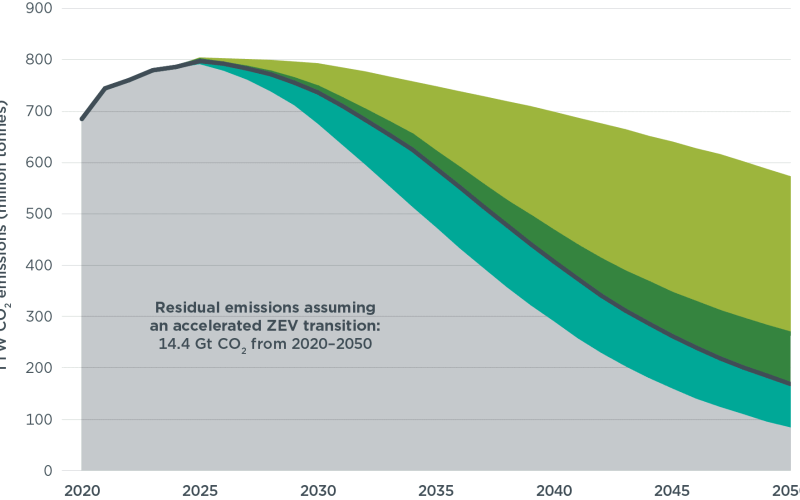The European Union’s transport sector remains the only major economic area where carbon dioxide (CO2) emissions have risen since 1990. However, new projections indicate this trend may soon reverse. Recently implemented EU CO2 regulations are expected to lead to a peak in road transport emissions as early as 2025—provided that existing standards remain intact.
A new edition of the International Council on Clean Transportation’s (ICCT) Vision 2050 series evaluates global zero-emission vehicle policies and market trends. The study examines vehicle sales, energy consumption, and emission trajectories up to 2050, assessing how transport aligns with the Paris Agreement objectives.
Findings from this year’s report underscore the impact of policies introduced over the past three years. Road transport CO2 emissions in the EU are projected to peak at nearly 800 million tonnes of CO2 in 2025, followed by a decline of approximately 25% by 2035. This shift is attributed to the transition from traditional internal combustion vehicles to zero-emission alternatives.
“Europe’s road transport sector is at a pivotal moment,” said Felipe Rodríguez, Deputy Director of ICCT Europe. “A decade after the Paris Agreement, the continent is making a decisive shift towards electric vehicles (EVs), boosting energy efficiency and significantly reducing emissions. However, this progress is contingent on maintaining current CO2 targets for car and van manufacturers. Weakening these regulations would put emission reductions at risk, widening the gap in meeting climate targets and compromising Europe’s global leadership in clean transport.”
Compared to projections based on 2021 policies, the EU’s ambitious regulatory framework has addressed 73% of the emissions gap required to align road transport with a Paris-compatible trajectory. The 2023 EU CO2 standards for cars and vans, along with the 2024 review of truck and bus emission standards, have substantially closed this gap—by 75% for light-duty vehicles and 66% for heavy-duty transport.
On a global scale, the study presents an equally optimistic outlook. CO2 emissions from road transport and the consumption of liquid fuels could peak by 2025. In three of the world’s largest vehicle markets—the European Union, China, and the United States—emission reductions are expected to outpace increases in other regions.
The most significant contributors to this trend are passenger cars, two- and three-wheelers, and transit buses. The cost of battery-electric vehicles (BEVs) is approaching parity with conventional cars in both purchase price and total cost of ownership, further driving adoption beyond regulatory requirements. Nonetheless, policy measures remain the most effective mechanism to ensure emissions remain on a Paris-aligned trajectory.





















